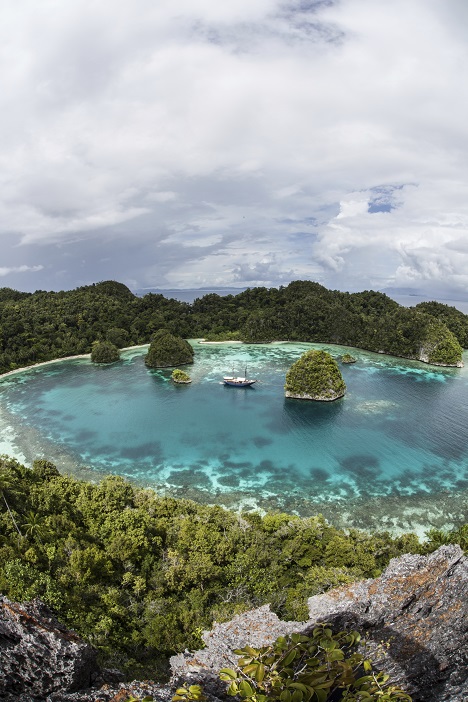 From day one, teenagers have the message drilled into their heads. “Acne is inevitable. You might reduce it substantially with our super-affordable and scientifically advanced facial cleansers. Basically though, you have to ride out the storm until your hormones calm down.” Maybe you’ve heard claims like…
From day one, teenagers have the message drilled into their heads. “Acne is inevitable. You might reduce it substantially with our super-affordable and scientifically advanced facial cleansers. Basically though, you have to ride out the storm until your hormones calm down.” Maybe you’ve heard claims like…
- You lost the genetic lottery and there’s no way round it.
- Humans haven’t adapted to having skin without hair yet.
- Every inch of our planet is irreversibly polluted and your skin is paying the price.
Admittedly, it does make sense. In westernized societies like the United States, the UK and Australia, acne afflicts between 79% and 95% of adolescents. The story rang true for me as a teenager; many young people have lost hope because of it.
The good news? Those notions are all completely false. There’s not an acne patient alive who can’t get clear.
Here’s an incredibly clear example of how pimples aren’t inevitable.
Kitava – a clear-skinned paradise
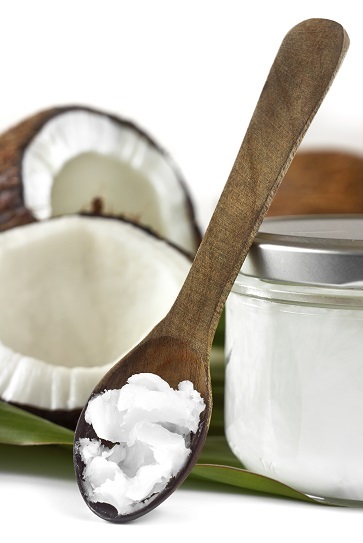 Kitava is a tiny island of just 2000 people in the Trobriand Islands group off the Eastern coast of Papa New Guinea in the Pacific.
Kitava is a tiny island of just 2000 people in the Trobriand Islands group off the Eastern coast of Papa New Guinea in the Pacific.
They live a simple fisherman’s lifestyle, receiving only a trickle of Western goods from the Papua New Guinea mainland. In 1990, electricity, telephones, and motor vehicles were absent.
Read Annihilate Your Acne – learn to prevent acne and stop just treating it!
The average life expectancy is 45, and there is little access to antibiotics, Accutane, or other scientific medicine. It is a land of wooden rowing boats, coconuts, and blazing sunshine.
Why the fuss over this unremarkable little island? Well, Kitava was once the subject of perhaps the most impressive acne study of all time.
In 1990, Dr Staffan Lindeburg travelled to Kitava, seeking to compare their rates of so called “Western-style diseases”, like cardiovascular disease, diabetes, stroke, dementia, and cancer, to Europe and North America.
Hence, for 7 weeks, Dr Lindeburg visited all 494 houses in Kitava and examined 1200 subjects aged 10 years or more, including 300 Kitavans between 15 and 25 years. Dr Lindeburg was a Swedish general practitioner, and an expert on skin conditions, with formal training on acne comedonica, acne papulopustulosa, and rare forms like acne conglobata.
Dr Lindeburg’s team also checked the Kitavans for skin disorders, in daytime to provide optimal visibility. In male Kitavans, the chest, face, and back were examined, whereas in females, only the face and neck were examined.
As expected, there was far less heart disease, cancer or diabetes. There were few Western style illnesses at all. Strokes were nearly absent. Malnutrition, hypertension and being overweight were also rare. Most early deaths resulted from their primitive medical care; infected wounds, broken limbs, or pregnancy complications…
…but the most widely reported finding was this: not a single Kitavan islander had acne.
Out of 1200 men and women analysed, not one pimple was detected. This even included 300 15 to 25 year olds, a prime time for acne.
According to Lindeburg: “Not a single papule, pustule, or open comedone was observed in the entire population examined. Although no closed comedones were reported, it is possible that they were present but undetected.”
The top 6 vitamins and minerals for clearing acne forever
That’s remarkable. Again, between 79% and 95% of US teenagers are plagued by acne. This study analysed 847 students from seventh and sixth grade classes in Auckland. 91% of male and 79% of female teenagers had acne.
It’s believed that acne is a worldwide teenage phenomenon. Yet the residents of Kitava blast that theory right out of the water. Apparently, the team might have detected a single blackhead on a teenager. However, Lindeburg still didn’t rule out a trick of the light, or that he’d imagined it…
…and anyway, that’s a single blackhead. Individual papules and pustules were observed, but only of infectious origin. They cleared up rapidly once basic penicillin was applied.
The conclusion is clear: Kitava is an island where acne does not exist. Acne is not inevitable.
The next obvious question is: how does their lifestyle differ to ours?
The Kitavan diet
The Kitavan diet is as follows. Coconuts, fish from the sea, tubers rich in starchy carbohydrates (yams and sweet potatoes), and tropical fruit are the mainstays. Their favourite fruits include guava, pineapple, banana, papaya, mango, and watermelon.
Consumption of grains, added sugar, margarine, vegetable oils, and trans-fats is virtually nil. Dairy, tea, coffee and alcohol were also virtually nil. Fat made up roughly 20% of calories, with carbohydrates forming nearly 70% and protein the rest. In the West, we are flooded with omega 6 fats from soybean oil and corn oil. In Kitava, their fat intake is mostly saturated fat or omega 3s in fish oil.
Why bread and pasta are a massive cause of acne
Unlike our beloved wheat, which spikes insulin massively, the tubers and fresh fruit where Kitavans gain their carbohydrates all have a low-glycaemic index. The average Kitavan spends only $3 a year on Western food.
Instead, as fairly primitive people, Kitavans eat most of their food fresh. Coconuts, for example, are eaten for their raw flesh, rather than ground down into the nutritionally bereft desiccated coconut of Western products. They simply don’t have the technology to degrade their food and pump it full of chemicals.
Kitavans truly love coconuts, and have endless dishes; they eat young, watery coconuts as a refreshing snack with lunch time. They eat the raw flesh. They also like to cook sweet potatoes and yams in a coconut cream with sea salt.
Magnesium, potassium and soluble fiber are plentiful on Kitava. The islanders eat almost every sea creature available. Staples include tuna and numerous shellfish. They eat almost every seafood organ, including the guts and head. They even eat fish eggs, which are apparently beloved by Kitavan children, especially when cooked burnt. Only the gall bladder, bones, and scales are discarded.
As for their lifestyle, fish is what Kitavans love, and hence, fishing is what they do. They spend long hours outside each day, and thanks to the scorching South Pacific climate, they’re never short of sunlight. Consequently, most Kitavans will have perfect levels of vitamin D. Cigarette smoking is rampant, with a gigantic 75% of Kitavans doing it.
Recommended – the 7 greatest natural topical treatments for acne
Their life is uncomplicated and stress-free too. According to Dr Lindeburg, Kitavans are an extremely superstitious race, gripped by an intense fear of supernatural beings. However, there are no busy commutes, nor giant mortgage bills to pay. Crime is low; their small villages are so intertwined that there’s no chance of the culprit getting away with it.
Kitavans use neither fluoride toothpaste nor any cleaning products containing triclosan. Their cosmetic and cleaning recipes are mostly hollistic, with natural ingredients like their beloved coconut oil.
The Kitavan – as fit as a fiddle
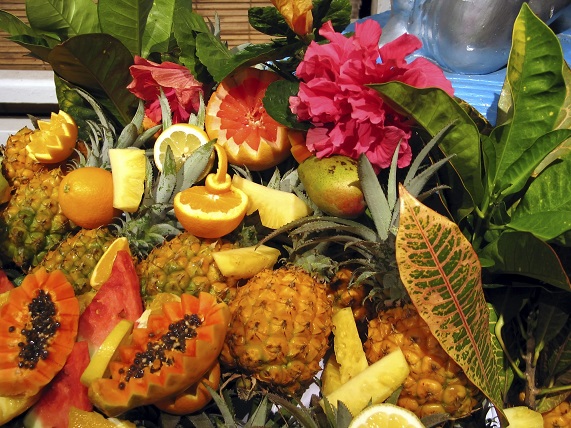 Also worth noting was the study’s original purpose; Dr Lindeburg found that heart disease, diabetes, strokes and hypertension were nearly non-existent.
Also worth noting was the study’s original purpose; Dr Lindeburg found that heart disease, diabetes, strokes and hypertension were nearly non-existent.
A second paper of his compared their health to the Swedes, and the Kitavans were far leaner. Young adult males had an average BMI of 22, which only diminished with age, versus a Swedish average BMI of 25. Because both populations lose muscle mass with age, Kitavans stay lean their whole life, while Swedes steadily get fatter.
Furthermore, the average American BMI is 28, 2 points away from obesity. Sweden is one of the thinner developed countries, yet the Kitavans easily outperform them.
Why zinc is the number one supplement for red and inflamed acne
The Kitavans are hardly starved either. The island might be primitive, but it’s a bona fide tropical paradise, with an abundance of fish and bananas. It’s their choice of food that really matters.
Likewise, the Kitavans had substantially lower blood pressure than Swedes, at all ages. This is yet more evidence that the Kitavan lifestyle is widely superior for health. As acne is simply a sign of a broader bodily malaise, it’s no surprise that the Kitavans have barely heard of it.
What does Kitava tell us about YOUR acne-clearing strategy?
Firstly, it tells us that acne is not inevitable, that a healthy diet can easily override your genetic destiny.
Some have argued that their genetics must be incredible; that if the Kitavans ate as many grains and sugar as Westerners, then they still wouldn’t get acne. Not so. According to Lindeburg:
- “…it is unlikely that the effective absence of acne… resulted entirely from genetic resistance to acne, since other South American Indians and Pacific Islanders whose ethnic backgrounds are similar to the Aché and Kitavans but who live in more westernized settings maintain considerably higher acne incidence rates”.
In other words, their healthy lifestyle is responsible, a lifestyle completely opposite to what we take for granted in Western civilisation. Their diet is also a 180 flip: no grains, no added sugar, and no processed food. It’s no coincidence that their skin is the opposite too.
Never ignore zinc – the most important acne nutrient and the best supplement for your skin full stop. The Kitavan diet is a vast feast of zinc-rich foods. The oysters, the lobsters, and the coconut flesh are all bursting with it.
Here in the West, zinc deficiency is an epidemic. In particular, 54.1% of acne patients may be deficient (study). In one experiment, zinc even reduced pimple counts by 49.8%. The Kitavans are pumping themselves with the ultimate acne metal without even realising it.
Your first solution is to simply copy their diet and eat tons of seafood. Alternatively, you can take a well-absorbed supplement. My recommendation is Thorne Research Zinc Picolinate, with no chemical additives and plenty of the efficiently absorbed zinc picolinate form.
Fresh food is forever – everything the Kitavans eat is whole and minimally processed. Coconut from a tree, fish from the ocean, and tubers from the earth. They don’t add MSG, table salt, or factory made canola oils. We talked at length about the perils of processed foods here. Endless studies have found processed meat like sausages, for example, to dramatically increase cancer compared to unprocessed meat like steak.
As for acne, processed foods are a recipe for inflammation and free radical formation, simply because of the sheer variety of contaminants. There’s pesticides, stabilisers, flavour enhancers, emulsifiers – not to mention mountains of added sugar.
Why grapeseed oil could transform your skin
You never know precisely what you’re getting with processed food. That’s why I recommend taking a leaf out of Kitava’s book.
Vitamin D is critical – in the West, we don’t get enough sunlight. We’re so seduced by television and iPads that sport is growing much rarer, let alone old fashioned adventuring in the wilderness. Hence, vitamin D deficiency is an epidemic.
A fascinating feature of Kitavans is that their skin is not only acne-free, but glowing and radiant too. I’ve been taking supplements for years now, and vitamin D has supercharged my skin tone beyond any other strategy. As the saying goes, it’s the sunshine vitamin, and it makes your skin tone sunny too.
I live in damp old England, so I take a vitamin D supplement all year long, lowering the dosage in summer and late spring. My favourite brand by far is this plant-derived NatureWise Vitamin D3.
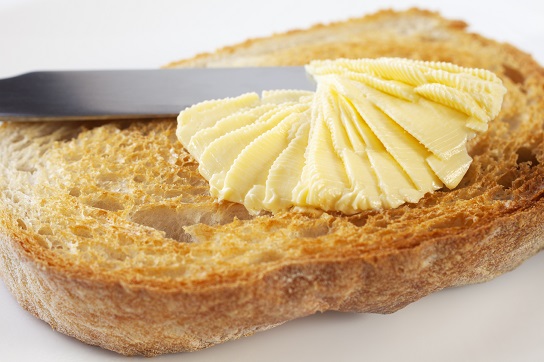 Grains are the biggest acne villains – in the United States and Europe, pasta, bread, pizza, cakes, biscuits, and cereal are our best friends. Wheat is the backbone of the agricultural industry.
Grains are the biggest acne villains – in the United States and Europe, pasta, bread, pizza, cakes, biscuits, and cereal are our best friends. Wheat is the backbone of the agricultural industry.
In Kitava, they eat no grains at all, the single biggest difference between our diets. Meanwhile, acne is an epidemic in the West and unheard of in Kitava.
In my eBook Annihilate Your Acne, there’s a 15 page chapter on the perils of grains. The main bogeyman is natural defensive compounds like gluten and lectins, which unleash digestive havoc in just about everybody, not just celiacs.
Kitava completely disproves the food pyramid; they eat no whole grains, yet a 75 year old Kitavan is fitter, less crippled, and far more able to enjoy life than the equivalent Westerner.
Vegetable oils are giving acne to millions – likewise, sunflower oil and its ilk are touted as heart healthy. Saturated fats like coconut oil are touted as heart-exploding monstrosities. Yet the Kitavans get most of their fat from coconut oil, and heart disease is a rarity. They don’t use any soybean oil because they can’t; it’s not available to them.
Meanwhile, you’d be shocked at how much soybean oil you’re eating. It might not be sitting on your shelf, but soybean oil is cheap, and thus found in donuts, pizzas, cakes, cookies – endless processed foods.
Such oils are created through a high tech factory process, blasted with catalysts like the inflammatory neurotoxin hexane. It also has an abominable ratio of omega 6 to 3 fatty acids. Instead of that junk, Kitavans use coconut oil, which contains many antioxidants and MCTs, which boost the metabolism and mental function.
Vitamin C cannot be beaten – like zinc, the Kitavans are ingesting vitamin C left, right and centre. Most fruits contain some, but Kitavans happen to adore the pineapple and mango – two of the richest fruit sources. Potatoes are a fantastic source in the American diet, but everybody cooks them so harshly that the delicate vitamin C molecules are obliterated.
To clear acne, you cannot ignore vitamin C. It’s a godsend for stress hormones and a key ingredient of wound healing proteins like collagen. Acne patients average at 40% less bloodstream vitamin C than clear skinned people (study).
The solution? Wolf down tropical fruits like the Kitavans, or simply take a supplement. The great thing about vitamin C is its megadosing potential; up to 1000mg may have bonus acne benefits, versus the RDA of 60mg. If your stress is your enemy, then megadosing is particularly effective.
A well-absorbed, food derived, filler-free supplement is this Garden Of Life Raw Vitamin C.
Sugar overdose = acne overload – in the West we eat roughly 160 grams of sugar per day, with the recommended quantity being 50 grams. In Kitava, they don’t eat any added sugar. Bananas and mangoes contain sugar, but that’s bound up with fiber and therefore absorbed more efficiently. By eating natural sugar, their totals will never dramatically exceed 50 grams. It’s nearly impossible when you’re eating real food, unless you enter gorilla mode and stuff your face with bananas.
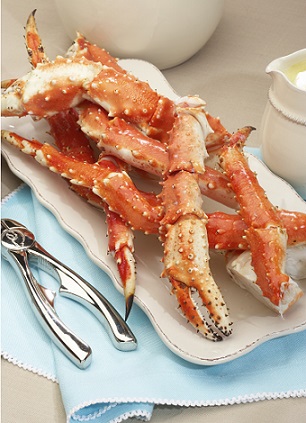 Coconuts are king – it’s often wondered how the Kitavans eat so many carbs, yet still don’t get fat. The carbohydrate, not fat, is the most fattening macronutrient, as it is most directly involved with shuttling energy into storage.
Coconuts are king – it’s often wondered how the Kitavans eat so many carbs, yet still don’t get fat. The carbohydrate, not fat, is the most fattening macronutrient, as it is most directly involved with shuttling energy into storage.
The solution may lie in the coconut. Coconut oil is rich in medium chain triglycerides, which are known to accelerate the metabolism of healthy patients, obese ones, cancer patients, and just about everybody. Likewise, sweet potatoes are packed with vitamin A, magnesium, and potassium, which can accelerate your whole body’s fat burning efficiency.
For acne, this has a simple message: we humans are adaptable. Your diet does not have to be perfect. Your average Kitavan man smokes like a chimney. That should be an acne nightmare, theoretically, but it’s not happening. He’s probably eating enough antioxidants from coconuts and sweet potatoes to make tobacco’s free radicals harmless.
In the West, meanwhile, we don’t eat enough fruit and vegetables. Parents don’t force their kids to eat broccoli like they used too, and their daily serving of “fruit” is often sugary and nutritionless orange juice. The total lack of herbs and spices, except on pizza and in curry, is a whole other story.
Sea buckthorn oil – a topical treatment which lowers oily skin by 45%
To cure acne, you shouldn’t just avoid unhealthy foods; you should strengthen your body’s defences through nutrition. Suddenly, coping with an inflammatory pesticide or two will be far easier.
Fresh fish beats Western factory meat – Kitavans eat pork on special occasions, but fish is their main protein source. Fish oil is packed with omega 3s, which are vital for immune system control. It’s a clean source of protein, without hormones, antibiotics or pesticides pumped into it, unlike the American cows kept in confined CAFO operations.
Conclusion – what you must do now
Never let anybody tell you that acne is an inevitable part of teenage life. It’s only inevitable when you live a normal Western lifestyle.
Consider your own diet, and compare it to a Kitavan’s. Is it completely and utterly different? If so, then excellent; you have big scope for clearing your skin.
That said though, there’s no need to adopt the entire Kitavan lifestyle. Few species on Planet Earth are more adaptable than humans. The Kenyan Masai are another tribal group that has no acne. Their diet is completely different; it consists mainly of beef, cow’s milk, and cow’s blood. That’s a far cry from the 70% carbohydrate intake of the Kitavans.
Similarly, the Arctic Inuit only discovered acne once they adopted a Westernised lifestyle on the streets of Canada. Back on the icecap, they relied on seal blubber and also ate nearly no carbs.
Nevertheless, there are clear common themes. Ditch the grains, added sugar, and vegetable oils, and above all else, eat fresh and minimally processed food.
NEXT: read the 167 page eBook and get the ultimate diet for acne
Thanks for reading!

Thank you for your adticle. I suffer from severe acne and this info is true. Thank you and please keep researching and uploading info as Acne has long lasting mental and physical scars that people discriminate and think its all about bad hygiene when its not. Thanks
My dermatologist had made me to reasearch about this iland. I was like it’s normal but damn.. This is awsome
I hope i could get some more information..
Thank you for this..
Awsome..??
Nice. Don’t get tempted to drop everything and move there though!
I can’t believe the answer to clearing my acne was right under my nose! I used to eat so unhealthily and wonder why I got pimples (I know, such an idiot) and I live on a tropical island where the kitavan diet is so easy to follow due to such easy access to these foods, I mean, they sell all these fruits and tubers fresh on the streets! I’m ashamed I used to eat so much processed food while it could’ve been so much cheaper and easier to eat all these nutritious foods. After reading this and many other posts of yours (they’re all so informative!), plus doing some investigation on my own, I started eating a low-glycemic kitavan diet free of dairy, grains, and I try to have a good balance of omega 3 and 6 (it’s hard tho). Being 14 and having experienced a pretty bad pizza face, people used to tell me that changing my diet won’t affect my acne because it’s normal in teens, but I’ve never thought so. I’ve tried the HCLF vegan diet, the keto diet, and some others, and even though they did help a little, this was amazing. I never really thought I could get rid of this much acne! I’ve been getting lots of compliments on how my skin has improved (I’m so strict though that I don’t get why I still get some casual pimples lol…though I shouldn’t complain). People think acne is all about hygiene when it really isn’t, and even though I haven’t had acne for that long, I know that it can affect self-esteem a lot. Thank you for all the great info and plz keep up the great posts!?
Question though, I’m concerned about the rather high GI of tropical fruits. Mostly all the fruits I have access to are tropical, and they’re difficult to find in a state where they’re not very ripe. Is that something I should worry about? Fruits low in sugar and GI are hard to come by here and are pretty expensive! What should I do??
Loved the article and info!
Just an opinion.
I don’t think grains have that much of an impact on acne, unless extremely refined, containing other “ingredients”, and what we eat with said grains. There are countless societies with little to no acne who have grains as a staple in their diet. It’s all about keeping it simple and natural, which is why I believe their skin is so great.
IS KITAVA ISLAND DIET IS AN OPTION TO ANTI-ACHE?
I AM FROM KITAVA ISLAND AND DISAGREE WITH THE CONCLUSION THAT THERE IS NO ACHE AMONG THE ISLANDERS PARTICULARLY THE TEENAGERS ETC.
GO BACK AGAIN AND RESEARCH AGAIN.